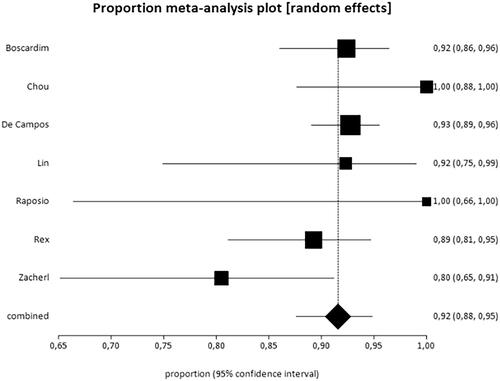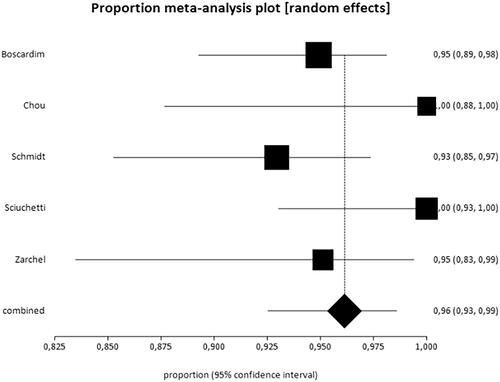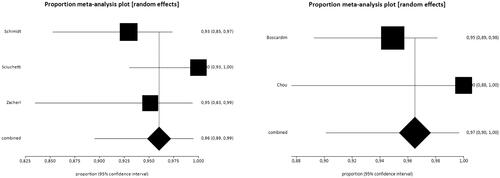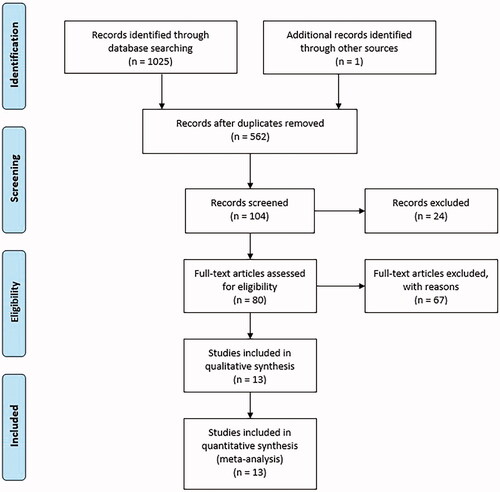Figures & data
Table 1. Characteristics of selected studies.
Table 2. Newcastle–Ottawa scale.
Figure 2. Results of the overall satisfaction outcome. The overall satisfaction rate was 92% (95% CI = 88–95%, I2=47.5%).

Figure 3. Results of the outcome total control of symptoms. The rate of symptom control was 96% (95% CI = 93–99%, I2=48.2%).

Table 3. Analysis of the outcome satisfaction according to the level of sympathectomy.
Figure 4. Forest plot of the outcome satisfaction in high resection levels (A) satisfaction rate 89% (95% CI = 84–95%, I2=47.7%) and low (B) satisfaction rate 96% (95% CI = 89–100%, I2=45.9%).

Figure 5. Interpretation of meta-analysis of the outcome satisfaction. The overlap of the confidence intervals indicates that there were no differences between the groups.

Table 4. Analysis of the outcome control of symptoms according to the level of sympathectomy.
Figure 6. Forest plot of the outcome control of symptoms in high resections (A) control rate 96% (95% CI = 89–99%, I2=65.9%) and low (B) 97% control rate (95% CI = 90–100%, I2=46.3%).

Figure 7. Interpretation of meta-analysis of the outcome control of symptoms. The overlap between confidence intervals shows that there were no differences between the groups.

Table 5. Analysis of the outcome compensatory sweating as per the level of sympathectomy.
Table 6. Quality of evidence for the outcomes satisfaction and control of symptoms in video-assisted thoracoscopic sympathectomy for treating pure axillary hyperhidrosis.
Data availability statement
The data that support the findings of this study, such as the list of articles found, the articles data, the list of excluded articles and any other are available from the corresponding author, Felisberto Jr G, upon request.

